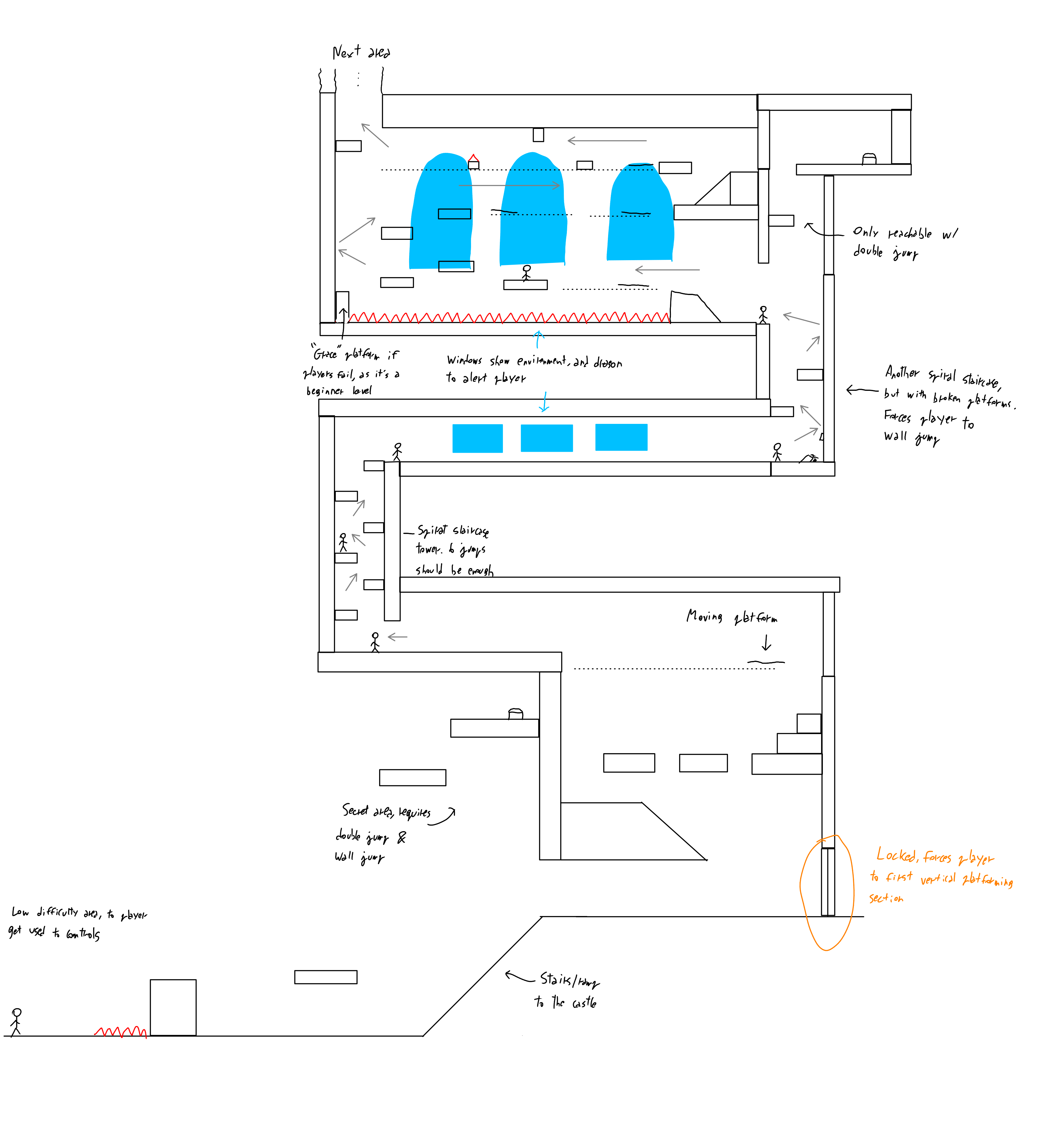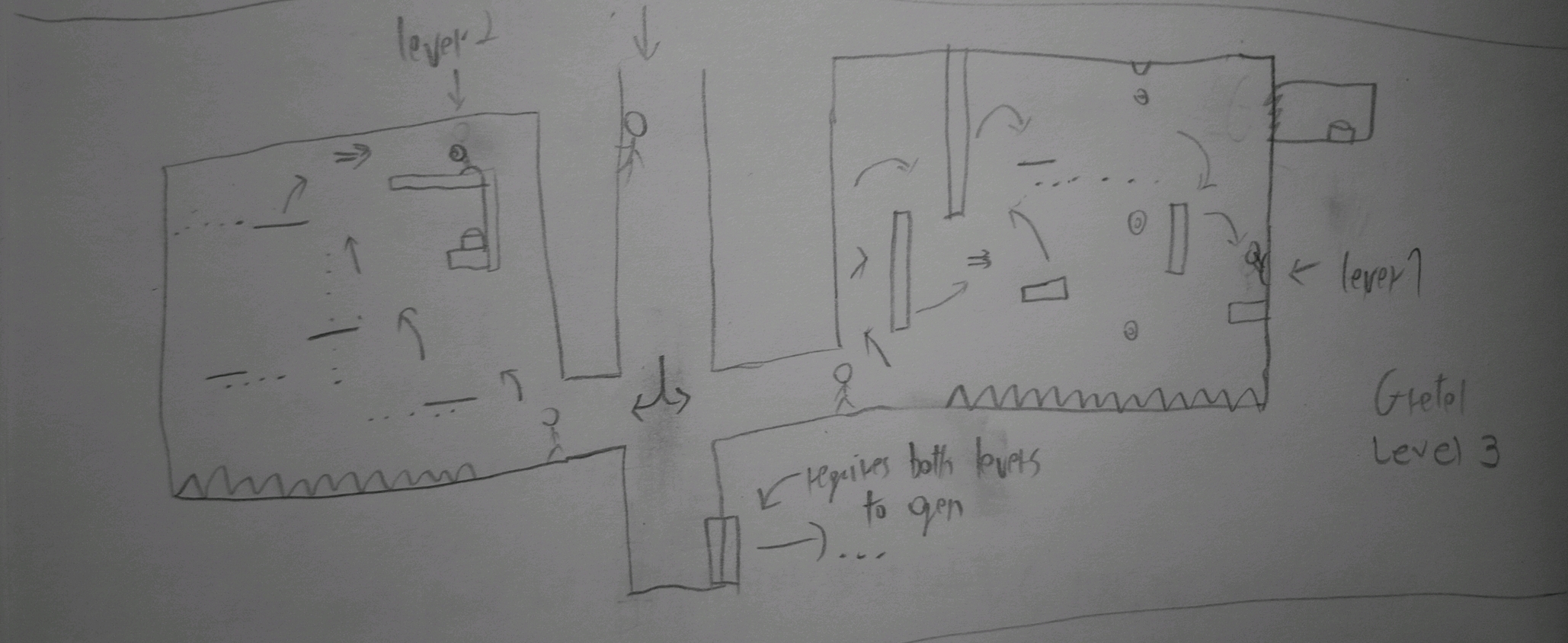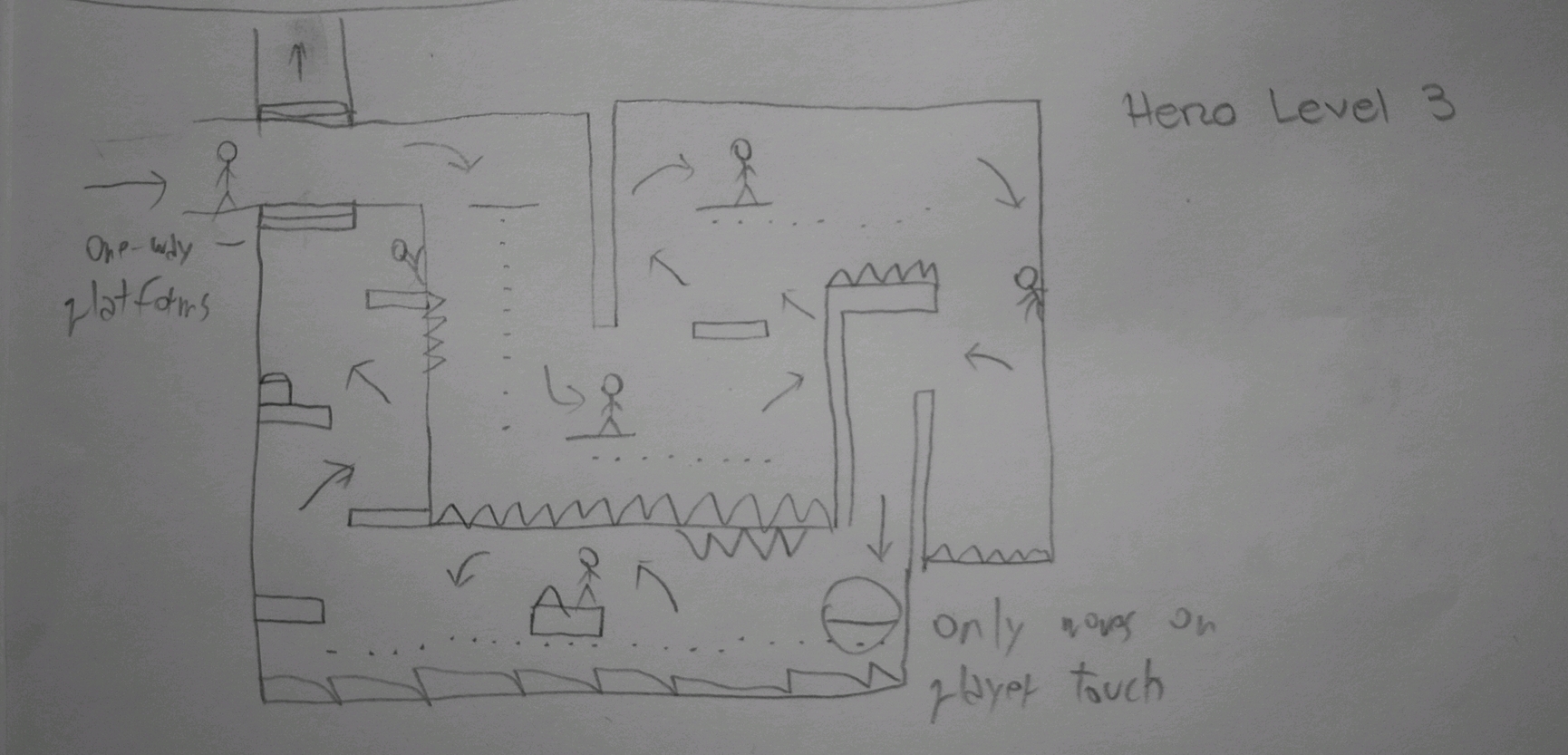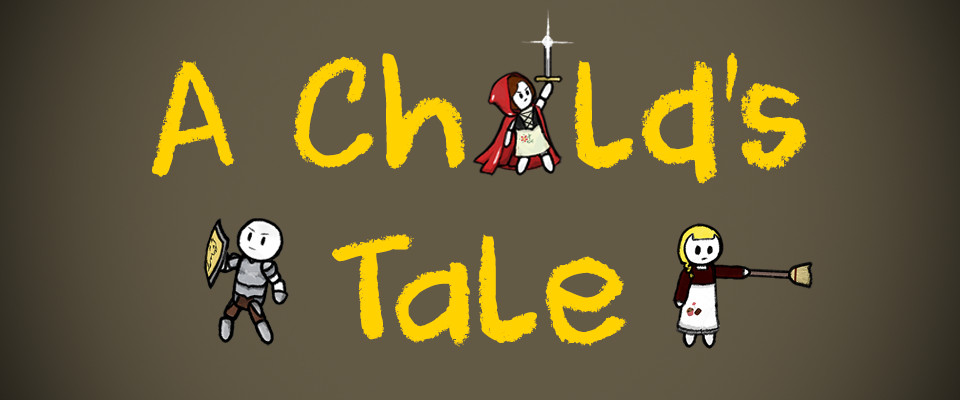Week 5 - (More) Level Design
Hi everyone, Ricardo here!
This week was dedicated solely to level design. With a good understanding of what worked and what didn't from the prototypes, we started planning the content of the game to develop in the coming final weeks: levels, and implicitly the world we are building.
Each of the three worlds/stories has its unique ability associated with it, but we still need to design levels considering all abilities available. Since we are developing a Metroidvania, backtracking and exploration are fundamental to the experience. We sadly don't have the time required to craft such a world with rich interconnections and secrets, so we prioritized a linear flow for now, albeit with a few secrets already for the player to explore.
One interesting challenge I had was with the beginning level. The first level is very important, as not only does it introduce the player to the game, but it also has to be interesting so they're hooked to continue playing. It's a hard balance to strike, having an engaging challenge with accessible platforming, but we got a good first iteration to try on: After that, I designed three more levels: two for each other story, "Little Red Riding Hood" (which focuses on double-jumping), and "Hansel & Gretel" (which focuses on the dash), and another one on the first story. Only the first one is still a "concept" that I need to flesh upon (the idea is that, since we are in a forest, the level has the player climbing huge trees through their branches, and then entering the inside of a giant tree):
After that, I designed three more levels: two for each other story, "Little Red Riding Hood" (which focuses on double-jumping), and "Hansel & Gretel" (which focuses on the dash), and another one on the first story. Only the first one is still a "concept" that I need to flesh upon (the idea is that, since we are in a forest, the level has the player climbing huge trees through their branches, and then entering the inside of a giant tree):


Hopefully next week we get to see all our designed levels already implemented in the game!
Get A Child's Tale
A Child's Tale
This game is being developed by a group of four students for the course of Game Development and Methodology
| Status | Prototype |
| Author | Karane |
| Genre | Platformer |
| Tags | 2D, Metroidvania, Narrative |
More posts
- Week 8 - Final WeekJul 01, 2022
- Week 8 - The final week!Jul 01, 2022
- Week 8 - Game Showcase and FeedbackJul 01, 2022
- Week 8 - Courtain CallJul 01, 2022
- Week 7 - Mob ImplementationJun 25, 2022
- Week 7 - Scenarios and all other spritesJun 24, 2022
- Week 7 - Witch Boss Battle and Level PolishJun 24, 2022
- Week 7 - A Big (Not) Bad WolfJun 24, 2022
- Week 6 - (Yup Even More) Level ImplementationJun 17, 2022
- Week 6 - Mob designJun 17, 2022

Comments
Log in with itch.io to leave a comment.
Hey, good job on the design. I have some notes or questions.
In my opinion, you (and your team) might be too punishing in certain areas. For example in the first image, near the large windows, the floor is filled with spikes, yet it is an unneeded punishment, as falling already punishes the player. Why did you add that additional punishment? In Gretel Level 3, similarly, the spikes only offer an additional punishment. In Hero Level 3, I do not think the spikes are too punishing, as they are the punishment for falling and you restart in the access area. If I could summarize my comment is that spikes should be a challenge to overcome, not a nuisance.
Also, it seems you have the concept of platforms (places where you can jump from under it to the top of it, and perhaps in reverse as well). Why not introduce them in the spiral staircase? It would facilitate navigation and simplify travel.
I also noted a disconnected platform at the beginning of the level. Try to avoid unnecessary content that might guide the player to nowhere. Why would the player go up there? Is there an enemy below? Is there a coin on the platform? (The reward can be the narrator talking.)
Overall, I think you guys are on a good track for a great game! If you want more feedback on the levels reach out to me on Discord and we can chat.
Thanks for your feedback! The disconnected platform and not using platforms in the spiral staircases, both at level one, are great points to which I can't recall any reasoning behind the current design, so we'll change those.
Regarding the usage of spikes, I see now how the first level can be quite punishing for new players, so we'll redesign that section accordingly. But a point we forgot to mention on this week's devlogs, is that levels have many invisible "checkpoints" at "solid" platforms. Therefore, when the player dies because of a misstep on their movement, it will usually respawn back at that spot for them to try again, and not a few platforms back. In that sense, spikes act more like a "quick" restart if we design the levels accordingly. At level 3 for example, it's true the spike placements rarely provide an additional challenge for the player; their purpose is therefore to put the player right back at the challenge as soon as they fail, so the player has shorter feedback loops and can quickly learn how to overcome a given challenge.
We also forgot to mention the game progression in one important regard: the Gretel level 3 is one of the last levels in the game, so we expect the player to have more platforming experience at this point. With Gretel's story, we want to further test the player's skill, and so we are designing many individual "challenge rooms", with some requiring the player to complete the room in one full go, without checkpoints in the middle (think for example Celeste's "Celestial Resort" levels). In that regard, spikes let us enforce that vision.